
Manual transmission driving schools specialize in teaching drivers to operate vehicles with stick shifts, focusing on clutch control, gear shifting, and smooth acceleration techniques.
Overview of Manual Transmission Driving Schools
Manual transmission driving schools offer structured programs tailored to teach drivers of all skill levels how to master stick-shift vehicles. These schools provide hands-on training, focusing on clutch control, smooth gear transitions, and real-world driving scenarios. Instructors often have extensive experience, ensuring personalized feedback. Lessons typically cover essential skills like starting on inclines, navigating traffic, and maintaining vehicle control. Many schools also offer refresher courses for experienced drivers seeking to improve their manual driving proficiency. Costs vary by location, with schools in cities like Los Angeles charging between $50–$100 per session, while international schools may offer similar pricing. These institutions cater to both beginners and advanced learners, ensuring a comprehensive learning experience.
Importance of Learning Manual Transmission
Learning manual transmission enhances driving control, allowing drivers to connect more deeply with their vehicle. It improves fuel efficiency, reduces wear on the car, and often lowers insurance costs. Mastering a stick shift also broadens car ownership options and prepares drivers for emergencies. Additionally, it fosters situational awareness and sharper reflexes, making drivers more versatile and confident behind the wheel. These skills are invaluable, whether driving in urban traffic or navigating challenging terrain, ensuring a safer and more enjoyable driving experience.

Why Learn Manual Transmission?
Learning manual transmission offers better control, improved fuel efficiency, and cost savings. It enhances driving experiences and provides more car options in various conditions, making it a valuable skill.
Benefits of Driving a Manual Transmission Vehicle
Driving a manual transmission vehicle offers numerous advantages, including better control over the car, improved fuel efficiency, and cost savings. Manual cars are generally cheaper to purchase and maintain. They also provide a more engaging and safer driving experience, as drivers are more connected to the vehicle. Additionally, knowing how to drive a manual car opens up more options when renting or buying vehicles. These benefits make learning manual transmission a valuable skill for any driver.
Challenges of Learning Manual Transmission
Learning manual transmission can be difficult due to the coordination required between the clutch and accelerator. Stalling the car is common for beginners, which can be frustrating. Mastering smooth gear shifts takes practice, and muscle fatigue can occur from frequent use of the clutch. Additionally, driving in heavy traffic or uphill can increase the complexity. These challenges highlight the need for patience and consistent practice to become proficient in manual driving.
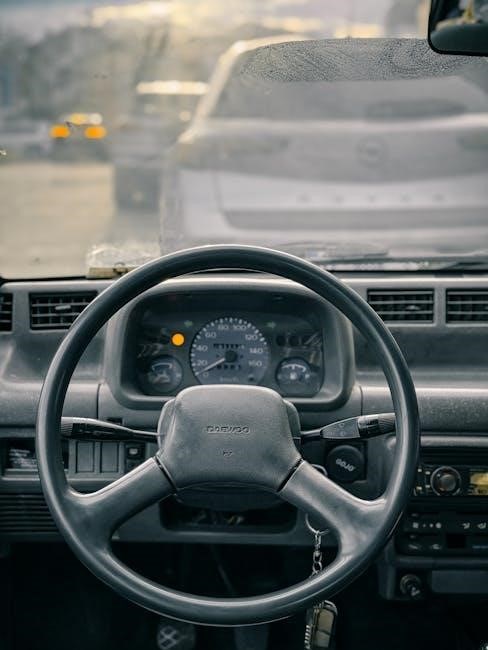
How to Find the Right Driving School
Research schools offering manual transmission lessons, ensuring experienced instructors and well-maintained vehicles. Read reviews and ask about structured curriculums and practice opportunities to master clutch and gear control.
Factors to Consider When Choosing a Driving School
When selecting a driving school for manual transmission, consider experienced instructors, structured curriculums, and access to well-maintained vehicles. Ensure the school offers ample practice opportunities and focuses on mastering clutch control and smooth shifting. Check reviews and ask about their success rates with manual learners. Consider the cost per lesson, location convenience, and whether they provide both theoretical and practical training. A reputable school with positive alumni feedback is ideal for effective learning.
Red Flags to Avoid in Manual Transmission Schools
Be cautious of schools with unclear pricing, lack of qualified instructors, or no structured curriculum. Avoid schools that push for long-term commitments without trial lessons. Steer clear of those with poorly maintained vehicles or instructors who lack patience with beginners. Negative reviews about teaching methods or unsatisfactory progress should raise concerns. Ensure the school focuses on practical, real-world training rather than outdated techniques.
What to Expect in Manual Transmission Lessons
Manual transmission lessons typically cover basics like clutch control, gear shifting, and stopping without stalling, progressing to smooth acceleration and real-world driving scenarios.
Structure of Typical Manual Transmission Lessons
A typical manual transmission lesson begins with understanding the basics of clutch and gear operation. Instructors demonstrate proper techniques, such as pressing the clutch, shifting gears, and accelerating smoothly. Lessons progress to practicing in a controlled environment, like an empty parking lot, before moving to real-world scenarios. The structure often includes hands-on practice, feedback, and gradual introduction to more complex skills, ensuring learners build confidence and mastery of manual driving techniques effectively.
Key Skills Taught in Manual Driving Lessons
Manual driving lessons focus on mastering clutch control, smooth gear shifting, and coordinating accelerator input. Students learn to recognize optimal RPM ranges for shifting, practice stopping without stalling, and develop muscle memory for seamless transitions. Lessons also cover reversing, uphill starts, and navigating varying road conditions. Emphasis is placed on developing situational awareness and confidence, ensuring learners can handle both city traffic and highway driving with precision and control, making them proficient in operating manual vehicles.
Cost of Manual Transmission Driving Lessons
Manual transmission lessons typically range from $70 to $150 per hour, depending on location and instructor expertise, offering tailored instruction for mastering stick-shift driving skills effectively.
Factors Affecting the Cost of Manual Lessons
The cost of manual transmission lessons varies based on location, instructor qualifications, and school reputation. Urban areas typically charge more than rural regions due to higher demand and living costs. Instructors with extensive experience or advanced certifications may charge premium rates. Additionally, the number of lessons required, availability of practice vehicles, and any extra resources provided by the school can influence the overall expense. These factors ensure tailored instruction but may increase the total cost.
Average Cost of Manual Driving Lessons
The average cost of manual driving lessons typically ranges from $70 to $150 per hour, depending on the location and instructor expertise. In urban areas, prices tend to be higher due to increased demand and living costs. Many schools offer package deals, which can reduce the per-lesson price, making it more affordable for learners seeking comprehensive training.
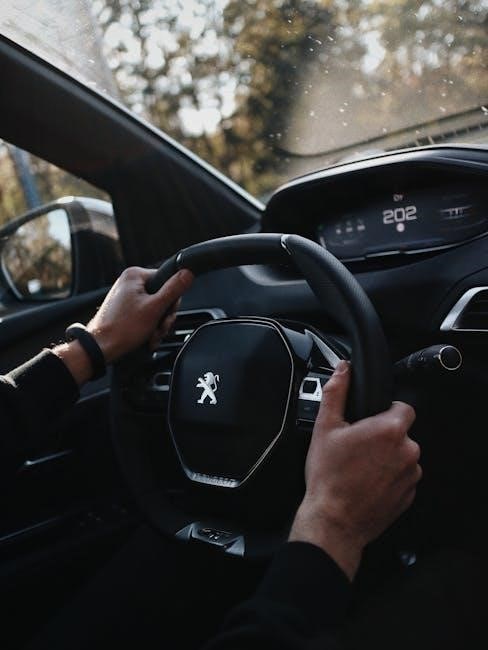
Best Locations for Manual Transmission Driving Schools
Popular locations include major cities like Los Angeles, New York, and Chicago in the US, as well as international hubs like Australia and the UK, offering expert instruction.
Top Cities with Manual Driving Schools in the US
Major cities like Los Angeles, New York, and Chicago are hubs for manual transmission driving schools. In Los Angeles, schools such as Stick Shift Lessons and Primo Driving School offer expert instruction; These cities provide a mix of urban and varied road conditions, ideal for mastering manual driving skills. Many schools in these locations ensure hands-on training with experienced instructors, making them top choices for learners seeking to become proficient in driving stick-shift vehicles.
International Manual Driving Schools
Manual driving schools are not limited to the US; they exist globally. In Australia, schools like AA Driving School offer manual lessons. The UK also boasts reputable institutions such as RED Driver Training. Germany, known for its driving culture, provides schools that emphasize precision and control, especially on the Autobahn. These international schools often cater to both locals and expats, ensuring a diverse learning environment. Their programs focus on mastering clutch control, smooth shifting, and real-world application, making them ideal for learners worldwide seeking to become proficient in manual driving.
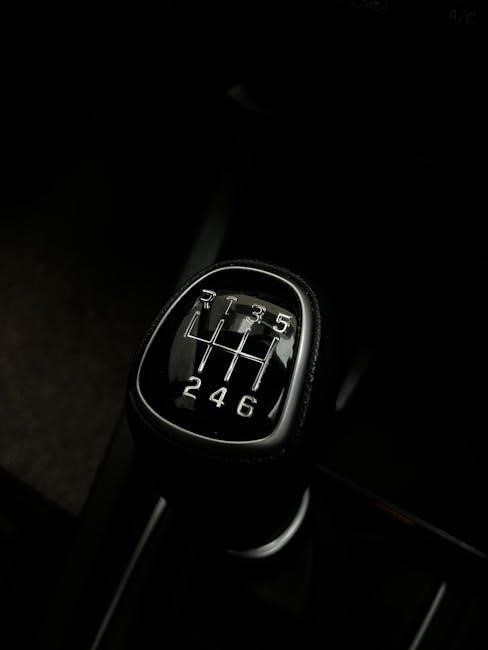
Tips for Mastering Manual Transmission
Start with practicing in an open area, focus on smooth clutch control, and gradually build confidence through consistent practice in various driving scenarios.
Best Practices for Practicing Manual Driving
Begin by practicing in an open, flat area to master clutch control and smooth gear transitions. Focus on listening to engine RPMs to determine optimal shift points. Gradually progress to uphill and downhill driving to improve coordination. Regular practice in various scenarios, such as traffic and parking lots, enhances confidence. Avoid riding the clutch and keep movements deliberate. Consistent repetition builds muscle memory, ensuring seamless shifting and control. Stay relaxed and patient, as mastery takes time and practice.
Common Mistakes to Avoid When Learning Manual
One of the most common mistakes is stalling the car, often due to improper clutch release or insufficient acceleration. Another error is riding the clutch, which can wear down the clutch over time. Shifting gears too quickly or hesitating can lead to jerky movements. Additionally, not listening to engine RPMs can result in poor timing for gear changes. Lastly, failing to fully press the clutch when shifting can cause rough transitions. Avoiding these habits ensures smoother, more controlled driving.
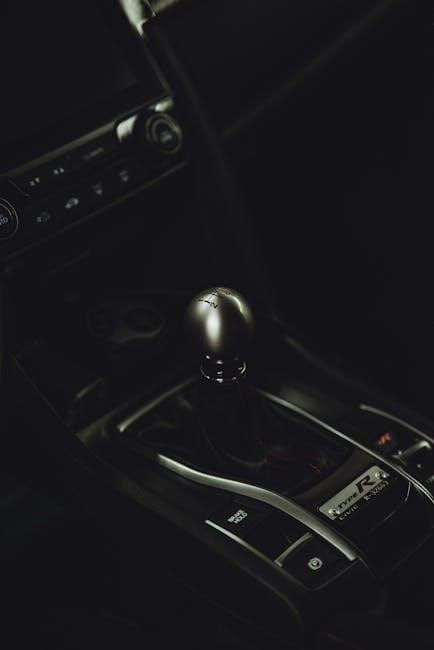
Advanced Techniques for Manual Driving
Advanced techniques include mastering clutch control, smooth shifting, and rev-matching for seamless downshifting. Drivers also learn optimal gear selection for varying speeds and cornering techniques.
Mastering Shift Timing and Clutch Control
Mastering shift timing and clutch control is essential for smooth manual driving. Proper clutch engagement prevents stalling, while precise gear shifts enhance acceleration and control. Drivers learn to listen to engine RPMs, ensuring seamless transitions between gears. Techniques like slow clutch release and rev-matching during downshifts are emphasized. Practice in real-world scenarios, such as inclines and traffic, helps refine these skills. Expert instructors guide learners to develop muscle memory and confidence in handling the clutch and gearshift effectively.
Driving Manual in Various Road Conditions
Manual driving schools teach students to navigate diverse road conditions, from urban traffic to winding hills. Lessons focus on adapting clutch and gear techniques for inclines, declines, and varying weather. Smooth acceleration on hills and controlled descents are emphasized. Students learn to manage engine braking and avoid wheel lock-up in slippery conditions. Real-world practice builds adaptability and confidence, ensuring graduates can handle any road scenario with precision and safety.
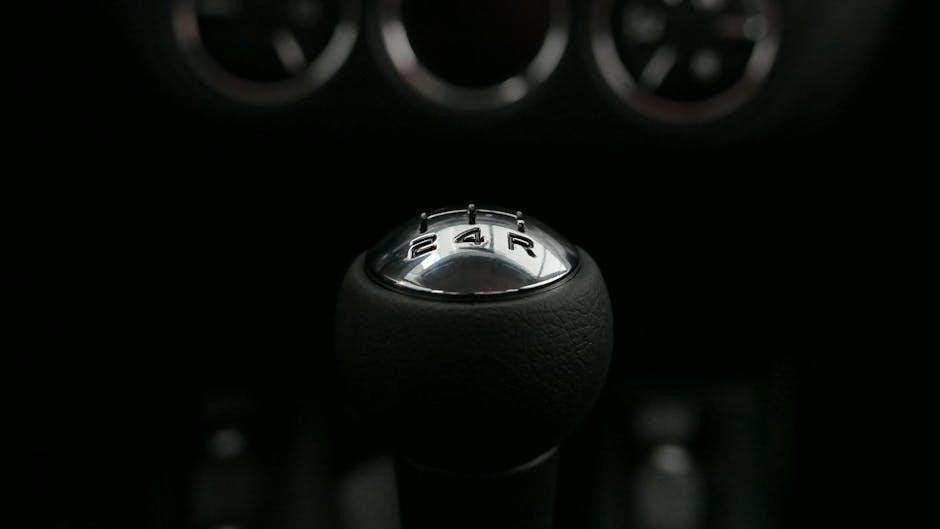
Real-World Applications of Manual Driving Skills
Everyday commuting, navigating hilly terrains, and long-distance travel are practical uses of manual driving skills, enhancing control and fuel efficiency in real-world scenarios.
Manual Driving in Traffic and Urban Areas
Mastering manual driving in traffic and urban areas requires precision and patience. Frequent stopping and starting demand smooth clutch control and timely gear shifts. In heavy traffic, drivers must balance acceleration and braking to avoid stalling. Urban environments also test situational awareness, as drivers navigate tight spaces, pedestrians, and traffic signals. Proper techniques, such as shifting into neutral at red lights, reduce clutch wear. Smooth acceleration and seamless gear transitions enhance safety and efficiency in congested city driving conditions.
Long-Distance Driving with a Manual Car
Long-distance driving with a manual car offers a rewarding experience, combining fuel efficiency and control. Smooth gear shifting at high speeds enhances momentum and reduces wear on the clutch. Proper techniques, like avoiding clutch riding, help maintain comfort and efficiency. Drivers should take breaks to rest their legs and avoid fatigue. While some find manual shifting in heavy traffic stressful, others enjoy the engagement and control it provides, making long drives more enjoyable and connected to the road.
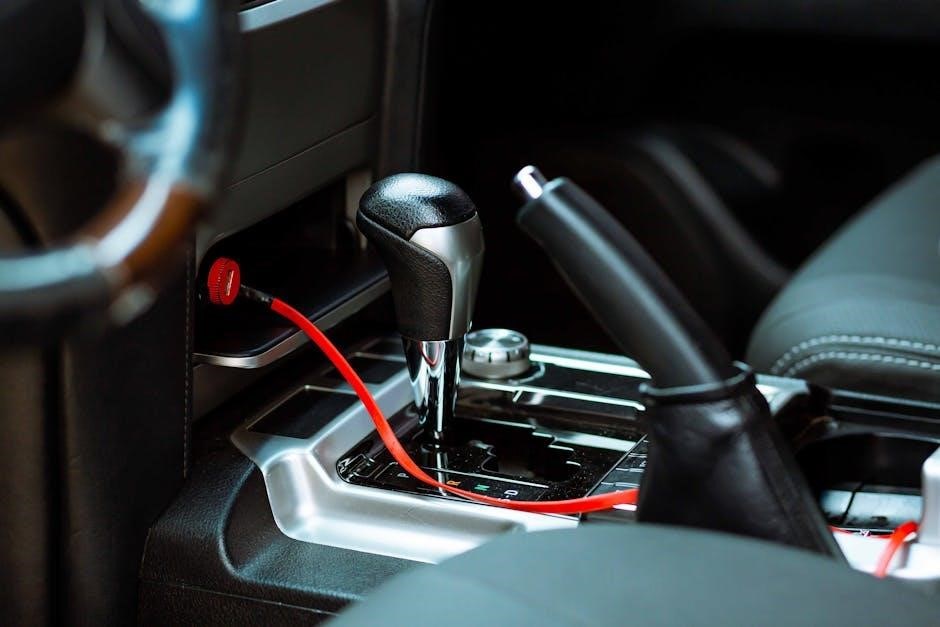
Choosing the Right Vehicle for Manual Driving
When selecting a manual car, consider ease of use for learners, smooth clutch feel, and precise gear shifting. Compact models often offer better fuel efficiency and lower maintenance costs.
Best Cars for Learning Manual Transmission
Popular choices for learning manual transmission include the Honda Civic, Toyota Corolla, Mazda3, Subaru BRZ, and Volkswagen Golf. These cars are known for their smooth clutch engagement and responsive gearboxes, making them ideal for new drivers. Compact vehicles with lighter weights and straightforward mechanical setups are often recommended. They provide a forgiving environment for mastering clutch control and shifting techniques without the intimidation of more powerful engines. These models are widely used in driving schools due to their reliability and ease of handling.
Factors to Consider When Buying a Manual Car
When purchasing a manual car, consider budget, size, and intended use. Compact vehicles like the Honda Civic or Toyota Corolla are ideal for city driving and learners. Fuel efficiency and maintenance costs are key factors, as manuals often have lower expenses. Reliability and brand reputation should also be evaluated. Test driving is essential to ensure comfort with the clutch and gear system. Additionally, consider the availability of parts and resale value, as these impact long-term ownership costs.
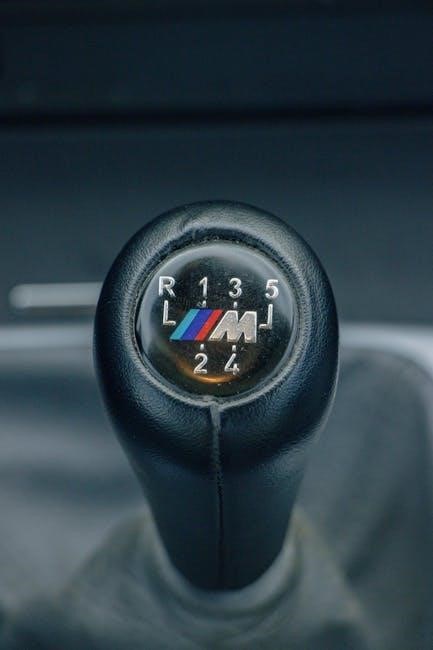
The Future of Manual Transmission Cars
Manual cars face declining demand due to automatics, but enthusiasts and some manufacturers continue to innovate, ensuring their niche remains relevant in the automotive landscape.
Are Manual Cars Becoming Obsolete?
Manual cars are gradually declining in popularity as automatics dominate the market. Many drivers prefer the convenience of automatics, especially in urban traffic. However, manual transmission vehicles still maintain a niche appeal among driving enthusiasts and purists. Driving schools continue to offer manual lessons, catering to those who value control and connection to the driving experience. While some predict manuals may fade, others argue they will remain a choice for specific driving scenarios and enthusiasts worldwide.
Modern Technology in Manual Transmission Vehicles
Modern manual transmission vehicles integrate advanced technologies to enhance performance and efficiency. Dual-clutch systems and automated manuals blend the control of manuals with the convenience of automatics. Rev-matching technology ensures smoother downshifts, reducing wear on the gearbox. These innovations make manual driving more accessible and enjoyable, especially in urban environments. Despite these advancements, the classic feel of a manual transmission remains a cherished experience for driving enthusiasts.
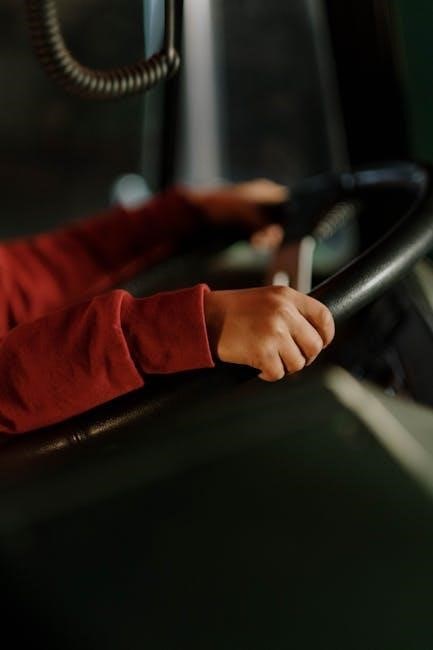
Success Stories from Manual Driving School Graduates
Graduates often share stories of mastering clutch control and smooth shifting, overcoming initial challenges to become confident drivers. Many highlight improved control and driving enjoyment.
Testimonials from Manual Driving School Alumni
Alumni often praise the structured lessons and patient instructors, citing significant improvements in their driving confidence. Many share stories of overcoming initial struggles with clutch control and gear shifting.
Graduates frequently mention the hands-on approach and real-world simulations that prepared them for various driving scenarios. They highlight the sense of accomplishment and enhanced driving skills gained through the program.
Testimonials frequently emphasize how manual driving schools empowered them to master stick-shift vehicles, making everyday driving more enjoyable and increasing their overall control behind the wheel.
How Manual Driving Schools Helped Real People
Manual driving schools have transformed lives by teaching essential stick-shift skills. Many students, initially struggling with stalling and gear transitions, gained confidence and mastery through patient instruction. For instance, one student overcame initial frustrations and now drives smoothly in heavy traffic. Others highlight how these schools opened doors to job opportunities requiring manual transmission proficiency. The structured lessons and real-world practice empowered individuals, turning hesitant learners into capable, independent drivers.
Manual transmission driving schools empower drivers with essential skills, fostering confidence and control. They keep the art of manual driving alive, inspiring new generations to master the craft.
Final Thoughts on Manual Transmission Driving Schools
Manual transmission driving schools provide structured programs and experienced instructors to master clutch control, gear shifting, and smooth acceleration. These schools cater to both novices and experienced drivers looking to refine their skills. By offering personalized lessons and real-world simulations, they ensure learners gain confidence and competence. The sense of accomplishment and improved driving ability make enrolling in such schools a worthwhile investment for anyone seeking to excel in manual driving.
Encouragement to Learn Manual Driving
Learning manual driving offers a sense of control and connection to the road that automatic vehicles can’t match. It enhances fuel efficiency, reduces costs, and boosts driving confidence. Mastering a manual transmission is a valuable skill, making you a more versatile and capable driver. With the right training from driving schools, anyone can overcome initial challenges and enjoy the satisfaction of driving a stick shift. It’s a rewarding experience worth the effort!